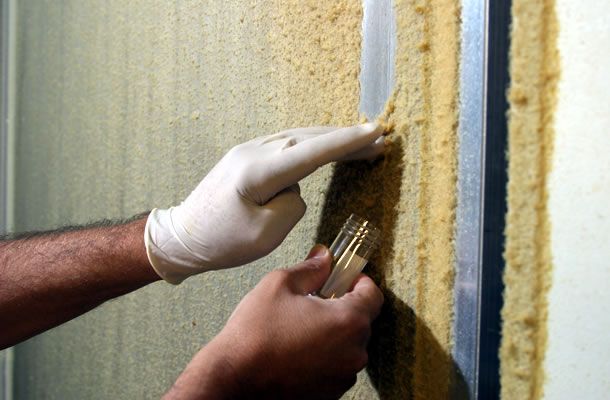How effective is your cleaning programme
Tags: Hatchery management | Whitepaper
, 27 August 2010

Cleaning and disinfection are fundamental to effective hygiene in the hatchery. Cleaning can remove up to 85 per cent of micro-organisms, preventing their development by removing their food sources, or ‘dirt’. Any remaining micro-organisms can then be eradicated by disinfection.
However, a cleaning and disinfection programme is like fighting an invisible enemy and to evaluate its efficacy, that enemy can be made visible by monitoring.
Three options for effectively monitoring hatchery hygiene are:
1 Visual inspection
Regularly take a critical look at levels of cleanliness throughout the hatchery and its equipment. Use a checklist, on which dirty spots (such as remains of broken eggs, fluff) can be indicated and recorded. Pay special attention to hard-to-reach areas, like backside cooling coils, door rubbers, ventilation pipes and the suction heads of the transfer machine. When dirt is visible to the naked eye, there will certainly be many micro-organisms present.
2 Agar cultures for non-specific bacteria
Make the enemy visible with a non-specific bacteria count. When compared with a reference (see example in table), this will illustrate the efficacy of your cleaning and disinfection programme. Remember that pathogenic bacteria and other micro-organisms are likely to co-exist alongside non-specific bacteria, and some fungi can also be revealed by this procedure.
Methods for inspecting flat surfaces (e.g. walls, ceilings) include:
- Swab and streak procedure: rub a sterile swab, moistened in a sterile solution or a manufactured sterile culturette, over a 2.5 - 5.0 cm area of sample surface. Gently streak the used swab over the surface of an agar plate several times, in a zig-zag fashion.
- Rodac plate procedure: Rodac plates are pre-filled with agar gel, which is slightly higher than the edge of the plate, so that direct contact can be made with the surface to be sampled. Remove the cover of the plate, press the agar gently onto the surface to be monitored (do not move the plate while contact is made), then replace the cover, taking care not to touch the agar.
Whether you use swabs or Rodac plates:
- Keep one agar plate unopened as a ‘negative sample’, to test the sterility of the plates and act as a ‘control’.
- Clearly mark where each sample was collected on the outside base of each plate. Predefine the number of samples per room - and test a variety of locations within each room/area (e.g. door handle, candling table, hatching egg).
- Store collected samples and your ‘negative’ sample upside down at 37 ˚C - 37.5 ˚C in a laboratory incubator or setter, taking care to place the plates in a plastic bag and set them down where they will not be disturbed. Agar contains nutrients that bacteria thrive upon. A single bacterium - and to a lesser extent, a fungal spore - will multiply under these conditions, to become visible as a colony.
After 24 - 48 hours, count and record the cultures. The number of colonies present indicates the hygienic state of the surface sampled. The evaluation of these counts should be based on the hatchery’s own criteria, or by the terms of a national or integration-wide quality programme. An example is given in the table.
3 Specific bacterial and fungal monitoring
To test for particular bacteria and fungi, specific plates contain a selective agar, formulated specifically to encourage growth or colonisation by the bacterium/fungi being investigated. Fluff, chick paper and other hatchery materials may also be prepared for monitoring in this way. For specific monitoring, it is often advisable to contact a specialised laboratory for sampling and/or an accurate interpretation of results.
Advice
- Discuss the results from this type of monitoring programme with staff responsible for cleaning and disinfection and/or with your supplier of detergents and disinfectants.
- Change procedures and/or consider a change of the cleaning and disinfection products being used if the results are unsatisfactory.
- Maintain records of all results, so that any changes occurring over time can be observed in the different areas monitored.
- Compare the results of hatchery hygiene monitoring with hatchability and liveability data.
| Based on Rodac plates with a diameter of 5,5 cm; Number of samples and locations are specified. | |||
| Colonies/Plate | Score | Average hatchery score | Rating |
| No colonies | 0 | 0.0 - 0.5 | Excellent |
| 1 - 40 | 1 | 0.6 - 1.0 | Good |
| 41 - 120 | 2 | 1.1 - 1.5 | Reasonable |
| 121 - 400 | 3 | 1.6 - 2.0 | Moderate |
| > 400 | 4 | 2.1 - 2.5 | Bad |
| Uncountable | 5 | > 2.6 | Very bad |
Evaluation of bacterial counts according to Dutch standards (1999 Poultry Farming Hygiene Regulations).
Written by Gerd de Lange
Senior Poultry Specialist
I welcome your feedback on this article - and if you require any additional information, please don't hesitate to contact me.